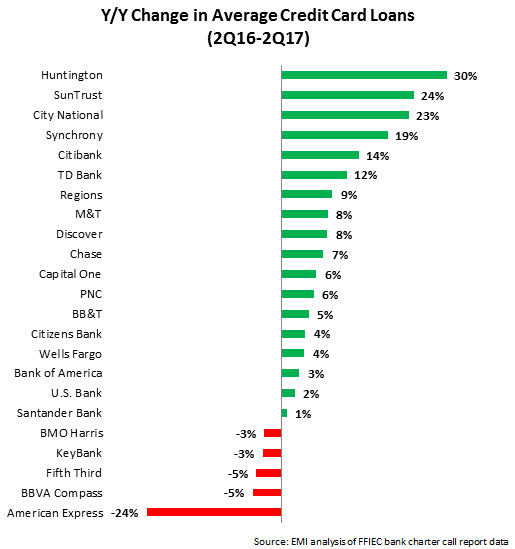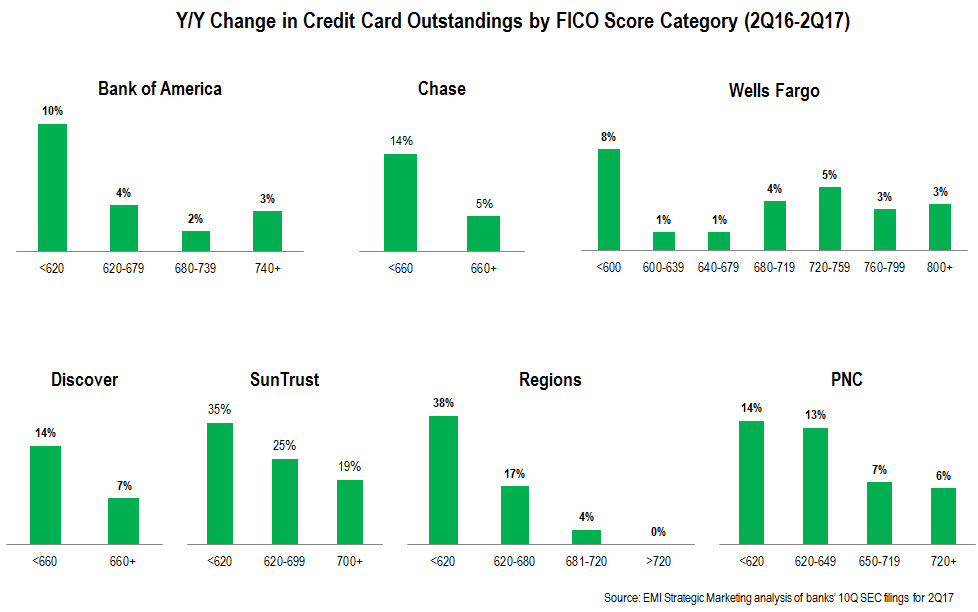As we enter 2022, it is worthwhile to look back on the key trends in the U.S. payments space during the past quarter, as many of these trends should continue this year.
Key credit card metrics continued to improve.
- According to the FDIC, credit card outstandings rose 1.2% y/y (to $806 billion) in 3Q21, the first y/y growth rate since the first quarter of 2020.
- The Federal Reserve Bank of New York reported that the credit card application rate rose throughout 2021, reaching 26.5% in October 2021 (a significant change when compared to the series low of 15.7% in October 2020)
- Purchase volume rose at a 20%+ rate for most leading issuers in 3Q21
- Charge-off rates remained at or near at historic lows.
Leading issuers launched new credit cards to fill gaps in their product portfolios and upgraded existing cards in key categories.
- Wells Fargo launched a low-rate card called Reflect, featuring an 18-month 0% introductory rate that will rise to 21 months for cardholders who make payments on time.
- Capital One (Venture X), American Express (Morgan Stanley Cash Preferred) and Bank of America (Premium Rewards Elite) rolled out new premium cards.
- U.S. Bank launched secured card versions of two existing unsecured credit cards; Altitude Go and Cash+.
- Climate change-focused challenger bank Aspiration introduced the Aspiration Zero Card.

The Buy Now/Pay Later (BNPL) market continued to grow and evolve, with traditional payments players (e.g., Capital One, Mastercard) announcing plans to introduce BNPL options. Existing BNPL players reciprocated by launching card and pay-in-full options (e.g., Klarna announced plans to introduce a debit card and Affirm announced a pay-in-full option).
Gen Z and Millennials have emerged as key targets for both established and emerging payments firms.
- American Express reported that spending by Gen Z and Millennials rose 38% between 2Q19 and 2Q21, while Baby Boomer spending declined over the same period. And perhaps more significantly, Gen Z and Millennials accounted for 75% of new Platinum cardmembers.
- TransUnion reported Gen Z and Millennials accounted for 47% of total credit card originations in 2Q21, up from 39% in 2Q19.
- However, it appears that traditional banks have not yet adapted their underwriting processes to capture this segment. A survey by Alliance Data found that 27% of Gen Zers claim to have been turned down when applying for their first credit card, a rate two times the level of any other generation.
The strong growth in digital payments (which accelerated during the pandemic) continued in 4Q21:
- A Discover Global Network survey found that nearly half (49%) of consumers are more comfortable with making digital payments as a result of COVID-19.
- eMarketer predicts that U.S. e-commerce sales will pass $1 trillion in 2022.
- Leading person-to-person payments provider Zelle processed $127 billion of payments in 3Q21, up 53% y/y.
We expect that most of these payments trends will continue in 2022 as consumer behaviors and preferences continue to be reshaped by the COVID-19 pandemic, and established and emerging payments providers adapt their solutions, offers and messaging to these market dynamics.






